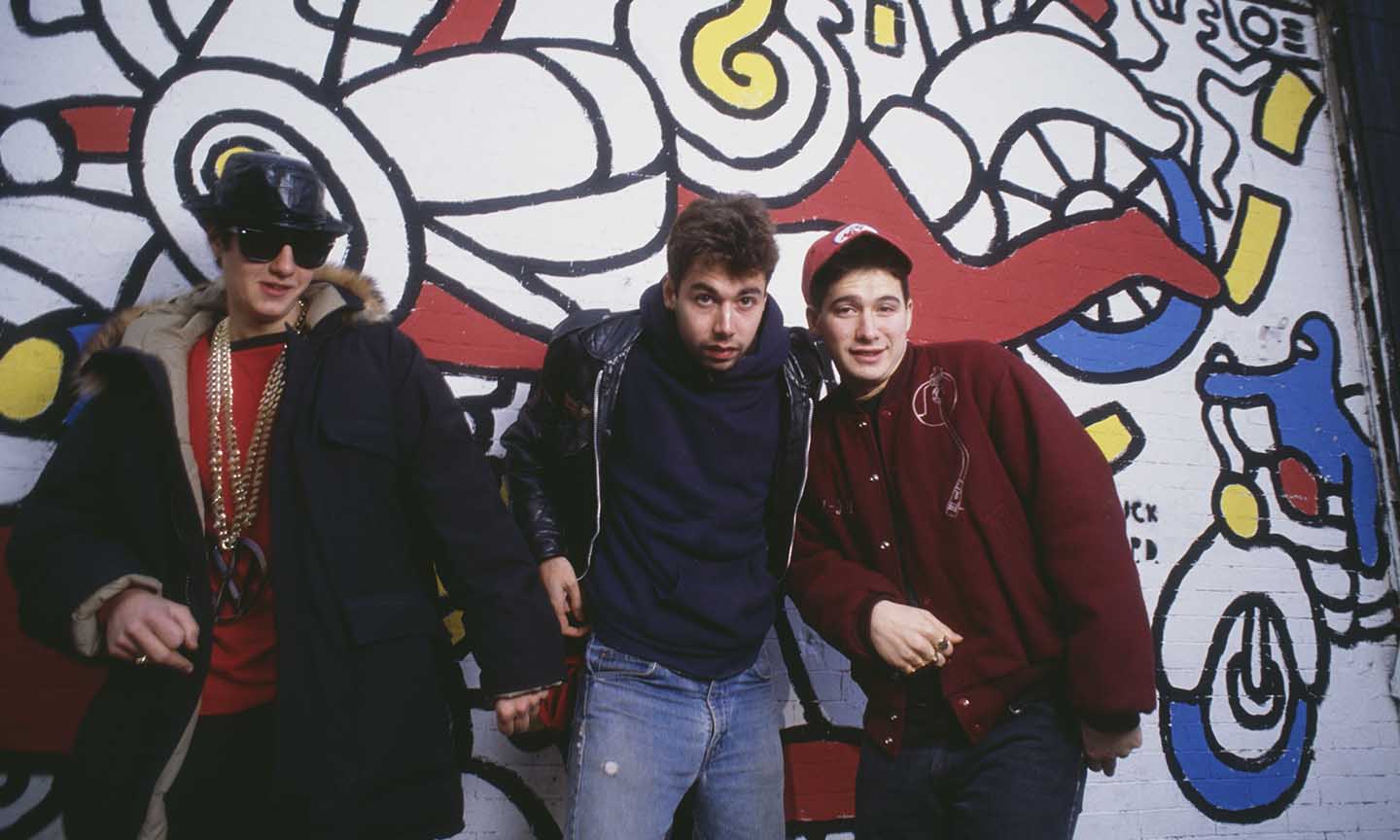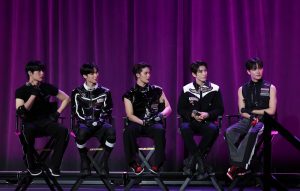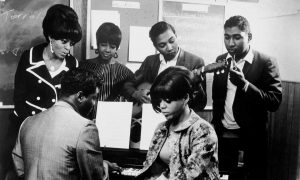To say that Beastie Boys were unique is true in so many different ways it’s almost meaningless. The group began life as a rough-and-ready hardcore punk band in New York City in the early 80s, before morphing into a rap band unlike any other. Early Beastie Boys songs parodied hip-hop’s tropes even as Ad-Rock (AKA Adam Horovitz), Mike D (AKA Michael Diamond), and MCA (AKA Adam Yauch) proved they had, as a later record would put it, “the skills to pay the bills.” The best Beastie Boys songs are so full of ideas it’s almost impossible to keep up.
Yet their status as the first significant white rappers, and their lacerating sense of humor, tend to combine to give the impression they were interlopers making fun of a culture that they were never truly a part of. However, a careful listen to choice Beasties Boys songs through the ages reveals the very different truth: the group were bona fide hip-hop icons, revered and respected by their contemporaries. Their madcap inventiveness and sheer delight in toying with the possibilities of the form mean they have to be thought of among the most important and creatively successful artists ever to pick up the mic.
Listen to the best Beastie Boys songs on Apple Music and Spotify.
Early years
In part, the failure of today’s digital music services to properly tell the Beasties’ story may have served to further distort wider public perception. Their earliest forays into rap, alongside recordings of their pre-rap punk incarnation, were reissued in the 90s and show up on most streaming networks. So everyone has a chance to get to know “Cooky Puss” (little more than an ice-cream-based joke) but comparatively few will be aware of the far superior, formally daring, musically and lyrically ingenious early Def Jam Recordings single “Drum Machine” (officially not a Beastie Boys record, as it’s credited to MCA and his friend Burzootie) or the brilliant B-side to the deleted AC/DC-sampling “Rock Hard” single, “Beastie Groove,” in which the threesome’s lyrics glide and collide over a Rick Rubin production that slows down and speeds up at will.
By the time they made “She’s On It” for the soundtrack to the movie Krush Groove, in 1985, the first Beasties persona had been minted: they were playing the role of nerdish teens obsessed with beer, parties, and girls. Yet even as the group were getting busy over raucous guitar riffs, they were also making rap for the emergent cadre of purists.
Licensed to Ill
“Hold It Now, Hit It”, from 1986 debut album, Licensed To Ill, is a magnificent example of hip-hop’s early Golden Age style, the trio’s effervescent approach and the apparently effortless ease with which they change meter, flow and rhythm in their raps underlining a technical ability and acuity that puts them up there with the best. So while “(You Gotta) Fight for Your Right (To Party!)” and “No Sleep Till Brooklyn” became the inevitable anthems that took them to the top of charts around the world, the simplistic vocal style on show was in no way representative of the band, their capabilities, or the breadth and depth of their creative intentions.
Paul’s Boutique
Those who heard the hit songs and expected more of the same from the Beastie Boys were totally floored by 1989’s Paul’s Boutique, but fans who knew the group as rhyme animals were surprised only by how consistently excellent the Capitol Records album turned out to be. The Beasties and their production cohorts, LA team The Dust Brothers, weren’t interested in looking back to Licensed To Ill – though there was plenty of inspiration taken, and musical elements plundered, from music’s history books.
Songs such as “Shake Your Rump” were musical and lyrical masterpieces, tapestries of samples stitched funkily together while the MCs got to blow through, around, and on top of the beats like jazz soloists at the top of their game. The album went over a lot of heads and sold poorly compared to its multi-platinum predecessor, but it remains a hip-hop classic, routinely cited as one of the greatest albums ever made. Just delight in the daring involved in sampling several Beatles tracks in the giddy, unhinged “The Sounds Of Science”, or zone out while the Sly Stone-fuelled exuberance of “Shadrach” proves that this was a band in total control of their art.
Check Your Head
By 1992, the Beasties were no longer the tabloid demons of yore, and with Paul’s Boutique having eased the pressure of expectation by shedding the pop audience that demanded repeated retreads of the first album, they felt ready to stretch out and be everything they always wanted to be.
For 1992’s Check Your Head, punk, funk, and psychedelic soul songs were essayed by the Beastie Boys in a live-instrument setting, while their rap-purist fan base weren’t shortchanged, either. “Pass The Mic” was as brutal and beat-y as anything they’d ever done, but tracks such as “Jimmy James” showed where they were heading: into a new and highly individual ocean of sound, where anything was possible and all bets were off.
Ill Communication
They followed the album up quickly (by their standards) with Ill Communication in 1994. Its combination of samples, raps, and live instruments resulted in the all-time classic “Sure Shot”, a song which gave jazz flutist Jeremy Steig the biggest payday of a half-century recording career when they sampled his “Howlin’ For Judy.” Elsewhere, “Get It Together”, saw the Beasties rope in Q-Tip from A Tribe Called Quest for a funky ride over Eugene McDaniels’ “Headless Heroes.” But it would be the record’s one moment of heads-down rawk – the blistering cop-show-theme pastiche “Sabotage” and its hilarious Spike Jonze-directed music video – that returned the band to worldwide prominence. Again, if all you knew were the hits, the impression you’d get of what the group was about would have been all wrong.
Hello Nasty
Hello Nasty emerged after a four-year break and found the band returning to something like the sampleadelic and rhyme-focused approach of Paul’s Boutique. Another strikingly entertaining video, for “Intergalactic”, found them battling giant killer robots while garbed as body-popping construction workers-cum-school-crossing attendants on the streets of Tokyo. Elsewhere, after the end of a long partnership with Hurricane (whose 1993 solo album includes “Stick ’Em Up,” the one song the Beasties ever collectively guested on with another artist), they’d hired world-champion DJ Mix Master Mike, and “Three MCs and One DJ” showed their delight at getting back to hip-hop basics, as well as emphasizing their mastery of their craft.
To the 5 Boroughs
No New Yorker was unaffected by the terrorist attacks of 2001, and the Beasties were no exception. They’d built a studio not far from the financial district and were working on an album during the elongated aftermath, which became their response to the War On Terror.
Released in 2004, To the 5 Boroughs was reflective, in part: “An Open Letter To NYC” crystallized their feelings towards their city in its moment of pain. But just as much a part of their challenge to the darkening mood was to get back to what they do best – reveling in rhyme and having fun with music and words, celebrating New York as the place where all these things became possible, and defending it by carrying on as before. “Ch-Check It Out” is a record that could only have been made in their Oscilloscope studios, wooden floors in a converted warehouse setting the tone for a record that flitted at will between eras, reveling in tradition while taking the music off somewhere new. “Triple Trouble” went back to hip-hop’s early days, sampling the opening of “Rapper’s Delight” while the trio traded galumphing brags and outrageous boasts back and forth over the infectiously bouncing beat.
The Mix-Up and beyond
An instrumental album wasn’t the expected next step, so that’s exactly what the Beasties did, releasing The Mix-Up in 2007; “The Cousin Of Death” referenced Nas, who turned up on “Too Many Rappers,” the first single from what was planned as a two-volume set of albums. However, MCA’s illness caused the postponement of Hot Sauce Committee Part One’s planned release in 2009; by the time he was recovered enough for the band to promote it properly, they claimed that they’d scrapped the entire thing and instead were going to release Hot Sauce Committee Part Two, which they’d decided would contain exactly the same tracks as the previously announced first part.
But MCA’s cancer returned, and the group ceased to exist when he died in 2012, weeks after Beastie Boys were inducted into the Rock And Roll Hall of Fame. Hot Sauce Committee is a fine epitaph, and single “Make Some Noise” – particularly the 30-minute video MCA directed for it, featuring two different Beastie line-ups (Elijah Wood, Seth Rogen and Danny McBride are one, with Will Ferrell, Jack Black, and John C Reilly the other) battling on a New York street. The group had come full circle and ended as they’d begun: making music that was witty, irreverent, experimental, accomplished, and never less than furiously, fabulously entertaining.
Think we missed one of the best Beastie Boys songs? Let us know in the comments below.




